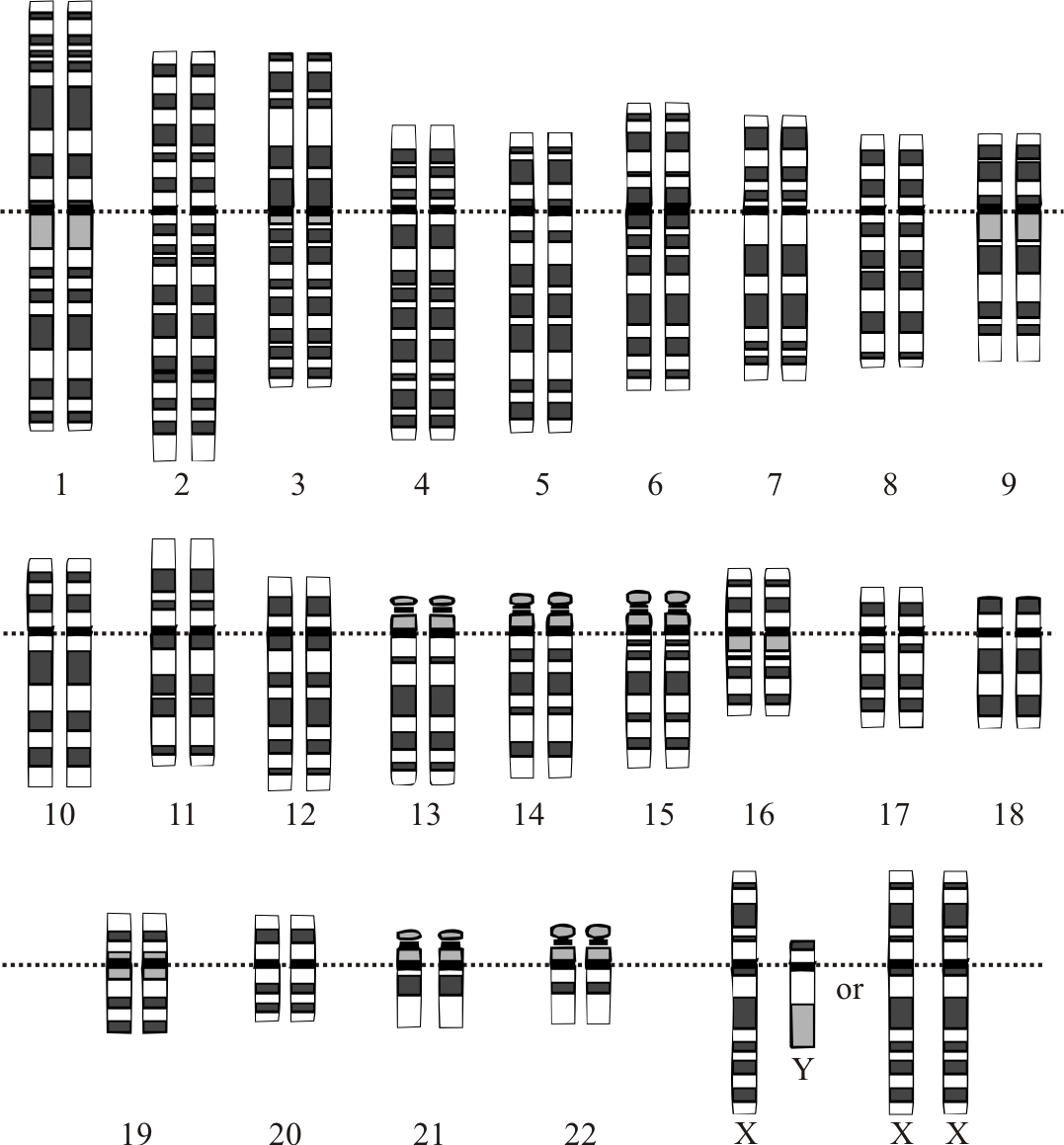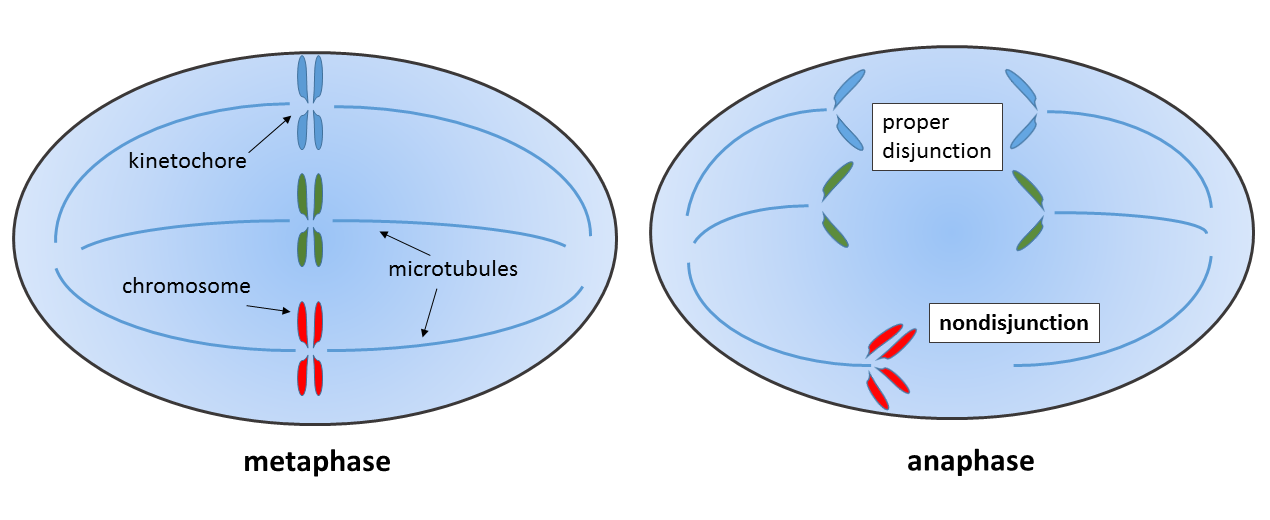Table of Contents
Abnormal Karyotypes
Down’s Syndrome is a common genetic abnormality referred to as trisomy 21. Instead of having the complement of 46 chromosomes of 22 homologous pairs plus 2 sex chromosomes, there are 47 chromosomes consisting of an additional chromosome 21.

The appearance of extra or missing chromosomes arises during meiosis in an event called nondisjunction. After fertilization, a zygote with an improper chromosome complement occurs.
Nondisjunction can occur during meiosis I or meiosis II to yield the aneuploid states of 2n+1 or 2n-1.

Translocation
Translocation is the movement of a piece or a whole chromosome onto another chromosome. This more often involves chromosomes that are acrocentric. An acrocentric chromosome has its centromere closer to the end of the chromosome instead of near the middle. The acrocentric nature of chromosome 21 and its small size makes it prone to an event called Robertsonian translocation whereby two acrocentric chromosomes fuse. This results in translocation Down’s syndrome, which has the same effects as inheriting an extra copy of chromosome 21.

Abnormalities in mitosis also occur and can result in diseases from translocations.





